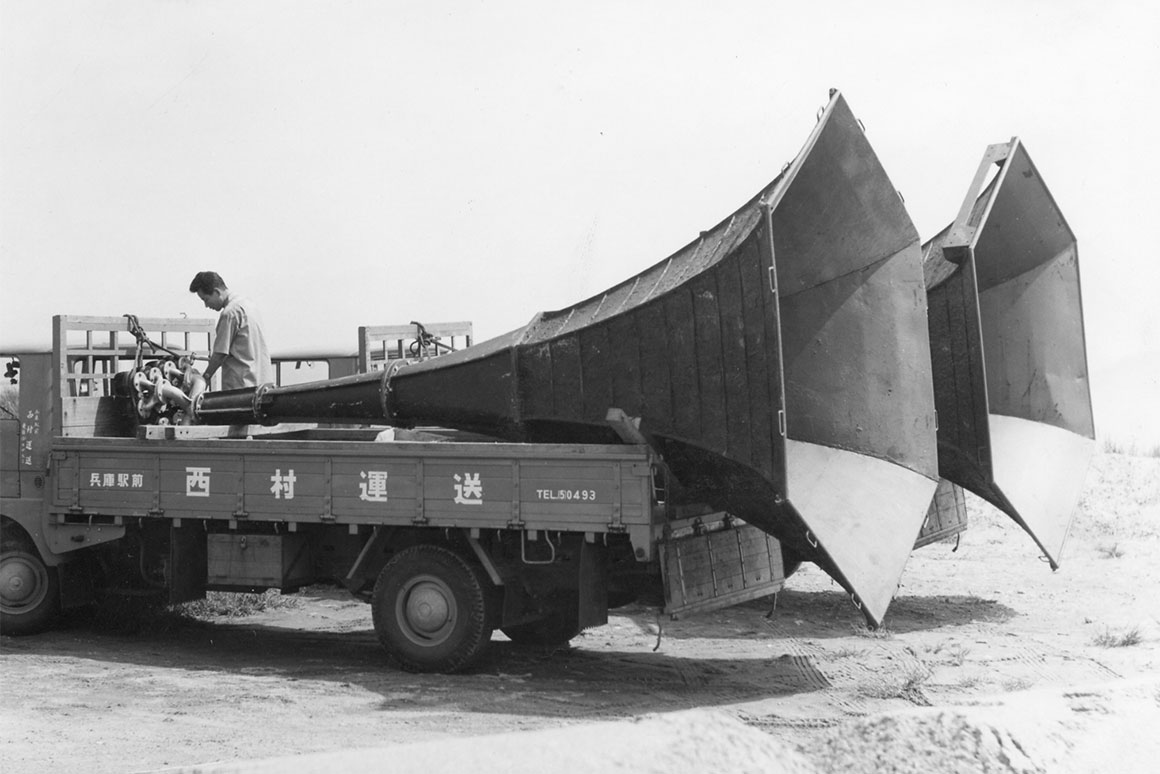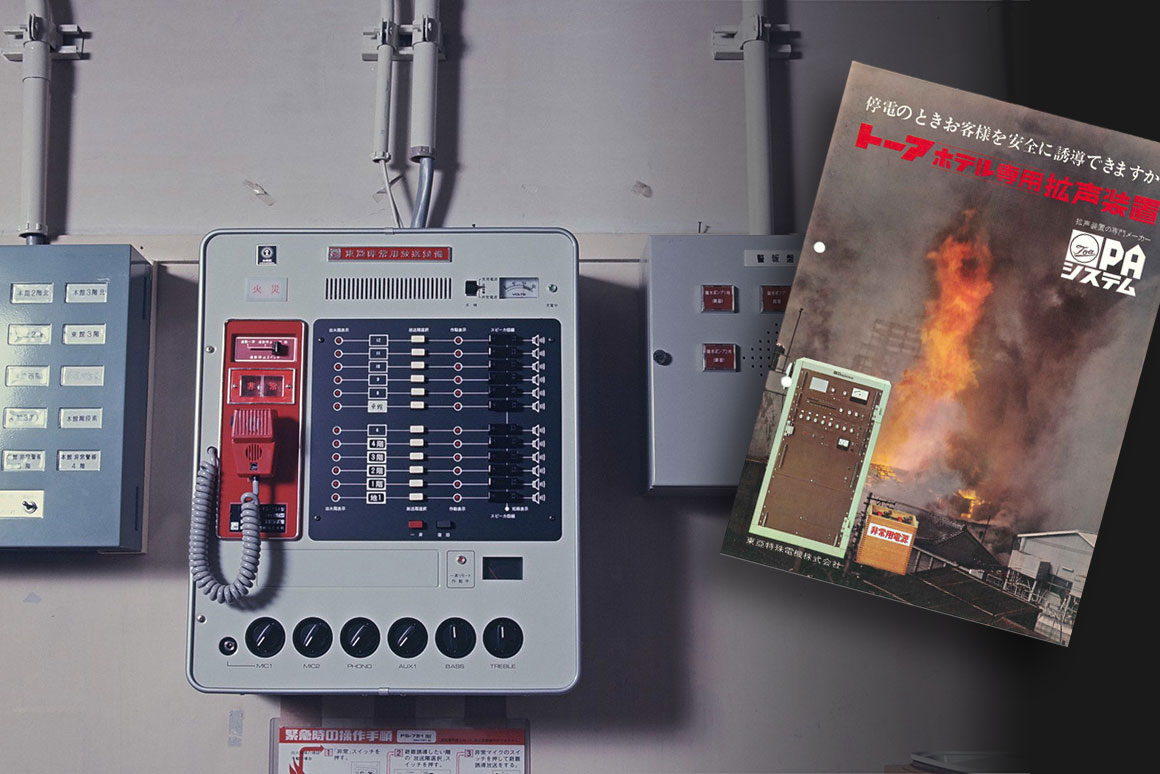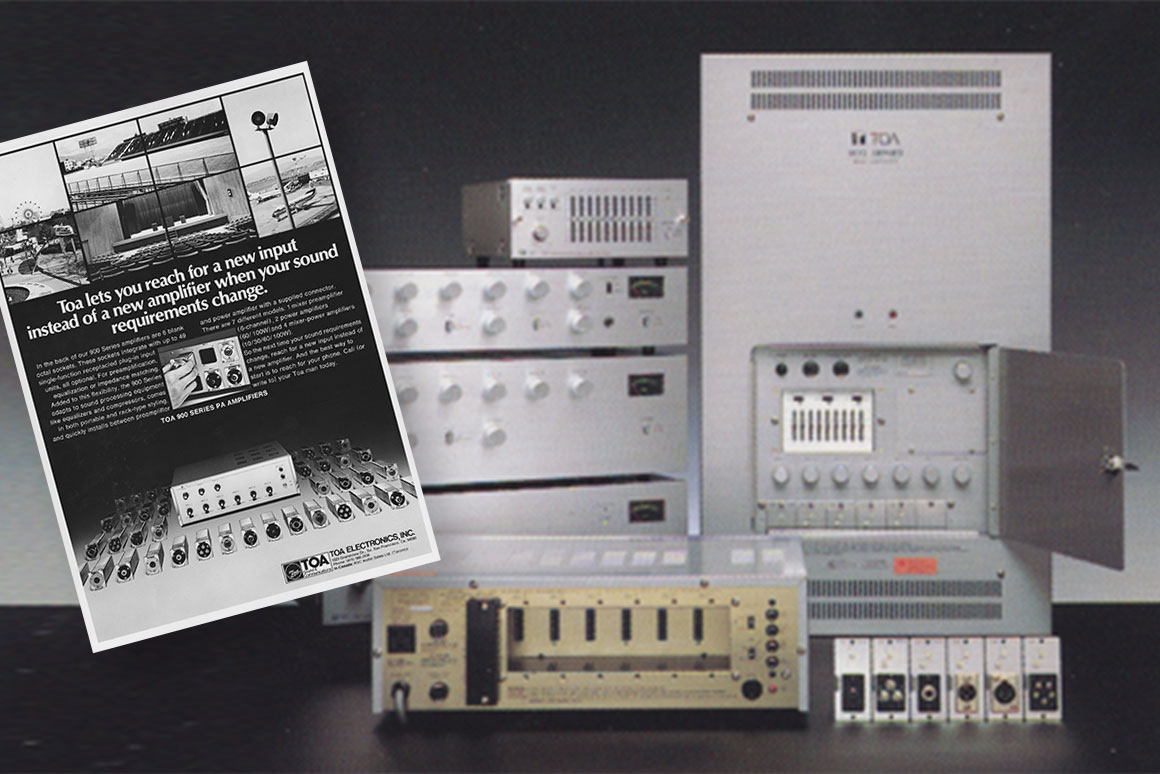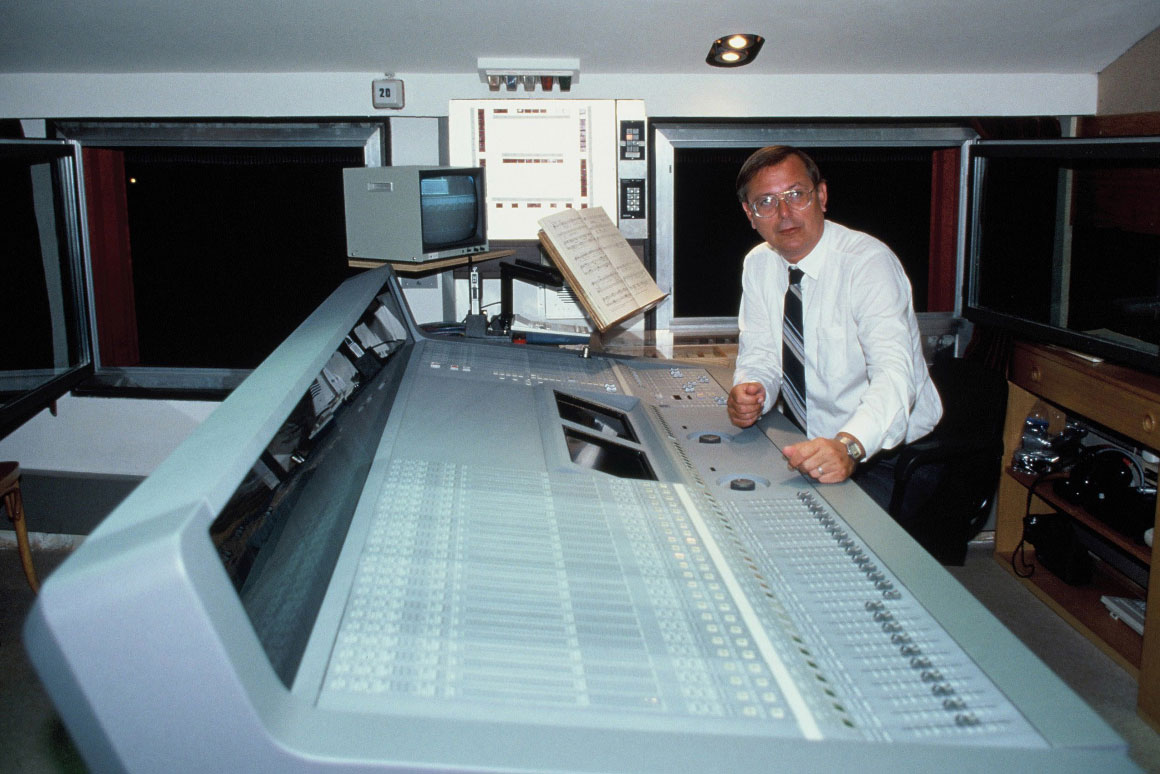
1934년 | TOA 역사의 시작
TOA의 설립자 나카타니 츠네타로는 1890년 8월 10일 고베에서 약 30km 떨어진 서쪽의 타카사고 시에서 태어났고, 1남 6녀의 외아들로 자랐습니다.
군 복무를 마친 후 사진작가나 화가가 되려고 했지만, 오사카 센바에서 제조업을 운영하던 처남이 사망하면서 그 꿈을 접어야 했습니다. 처남이 대학을 졸업하고 돌아가신 남편의 사업을 이어받을 때까지 그는 처남 대신 누나와 함께 일했습니다.
누나가 남편의 사업을 이어받을 무렵, 쓰네타로는 여행 중에 우연히 한 젊은 엔지니어를 만났고, 그로부터 마이크 제작에 대한 관심이 생겨났습니다. 고베로 이사한 후, 그는 TOA 전기제작 주식회사를 설립하고 즉시 마이크 제조를 시작했습니다.
이것이 오늘날 TOA로 1934년 9월에 이곳에서 뿌리를 내린것입니다.

1935년 | 설탕으로 만든 탄소
설탕을 구리 냄비에 넣고 태우면 처음에는 설탕이 액체 상태로 녹다가 점도가 높아지며 검은 케이크 형태로 변합니다. 이를 500°C로 예열된 도가니에 넣고 산소 공급을 차단한 뒤 1,100°C까지 계속 가열한 후 급속 냉각하면 코크스 형태의 탄소가 얻어집니다.
TOA는 이 공정을 통해 얻은 탄소를 균일한 크기의 입자로 분쇄하여 탄소 마이크에 사용했습니다. 1kg의 설탕에서 단지 몇 그램만이 이용 가능한 탄소만 얻어졌다고 전해집니다.

1954년 | 세계 최초의 전기 메가폰
1954년, TOA는 세계 최초로 전기 메가폰을 개발했습니다. 이 메가폰은 장거리에서도 선명한 음질을 제공하며, 사용자가 한 손으로 마이크를 잡고 스피커 부분을 어깨에 걸 수 있게 편하고 휴대가능한 설계로, 거리에서 선거 유세를 하는 정치 후보자들 사이에서 큰 반응을 얻었습니다.
1957년에는 일본 최초로 트랜지스터 메가폰을 개발했으며, 1959년에는 트랜지스터 자동차 앰프의 상용화에 성공했습니다. 당시 첨단 기술을 활용한 이 제품들은 가벼운 무게, 컴팩트한 디자인, 적은 에너지 , 그리고 높은 성능으로 세계를 놀라게 했습니다.

1962년 | 초대현 PA 시스템
TOA는 1961년 해외의 고객 요청에 따라 목표 12km라는 사례가 없는 전송 거리를 갖춘 초대형 PA 시스템 개발을 시작했습니다. 교토의 히에이 산과 일본 세토안의 해역 아와지섬 등 여러 지역에서 2회의 예비 테스트를 포함 총 9회의 테스트를 실시했습니다.
이 경험은 이후 TOA의 제품인 혼 어레이 스피커의 개발 및 출시에 기여했습니다.

1969년 | 긴급 방송 시스템
1968년 아리마 온천에서 발생한 대규모 화재로 TOA는 방송 시스템에 의한 피해 최소화 방법에 관한 연구가 시작했다. 이듬해 TOA는 일본 최초의 긴급방송 시스템을 개발해 추후 일본의 소방법 개정으로 이어졌다.
그 후 TOA는 업계 최초의 공간 절약타입의 벽걸이 시스템도 개발되었으며, 이렇게 발전하여 TOA 시스템은 긴급 방송 시스템 표준으로 정착되었다. 긴급 방송 시스템 외에도 TOA는 유럽에서 사용할 음성 대피 시스템 외에도 신속한 지진 정보 시스템과 다국어 방송 서비스도 개발했습니다.
지금도 이러한 시스템은 전세계 국가에서 사람들의 안전에 기여를 이어가고 있습니다.

1972년 | 900 시리즈 - 차별화된 혁신
"900 시리즈" 개발 비하인드 스토리, 개발 엔지니어의 이야기
“당시 우리는 샌프란시스코에서 아파트를 빌려 몇 달 동안 시장 조사를 진행했습니다. 그 결과, 새로운 제품 기획을 시작하기로 결정하고, 음향 관련 회사들을 찾아다니며 모든 가능성을 철저히 논의하여 구체적인 개념을 도출했습니다.
미국인들은 대체로 제품에 다른 것과 차별화되는 특별한 기능이 없으면 큰 관심을 보이지 않습니다. 우리는 그 ‘무언가’를 찾기 위해 많은 노력을 기울였고, 결국 모듈러 구조라는 개념을 떠올렸습니다. 당시 우리의 개발 주제는 ‘차별화된 혁신(Something Different)’이었습니다.”

1990 | 비엔나 국립 오페라 극장을위한 풀 디지털 믹싱 시스템
당사의 풀 디지털 믹서 개발은 세계 최초의 시도였음에도 불구하고 개발 시작부터 시스템의 최종 설치에 불과 2년 반이라는 제한된 기간뿐이었습니다.
우리는 비엔나 국립 가극장의 톤마이스터와 여러차례 연락을 하고, 철저히 확인을 거듭한 결과, 프로토타입 제조 및 설치 기기의 개발을 거쳐 결국 설비를 극장에 납품할 수 있었습니다.
